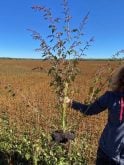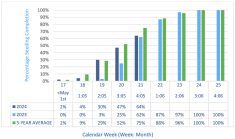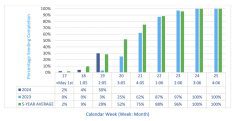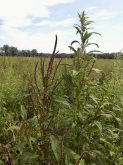Many weed seeds that appear undamaged after passing through a Harrington Seed Destructor still fail to germinate, say researchers at the University of Illinois.
Developed and widely used in Australia, the HSD is mounted on the back of a combine and crushes weed seeds to prevent them from germinating.
A University of Illinois release says researchers collected seeds from 10 common weed species in soybean fields in the U.S. Midwest and Mid-Atlantic regions. They fed the seeds through a stationary HSD and then tried germinating them in a greenhouse and in the field following a typical Illinois winter.
Read Also

Mazergroup’s Bob Mazer dies
Mazergroup’s Bob Mazer, who helped grow his family’s company into a string of farm equipment dealerships and the main dealer for New Holland machinery in Saskatchewan and Manitoba, died July 6 from cancer.
Zero to 15 per cent of the seeds appeared to be undamaged immediately after milling, regardless of species and seed size. But when the undamaged seeds were buried in the field and left through the winter, fewer than 10 per cent survived. “Basically, almost zero survived overall,” said Adam Davis, head of the U of I department of plant science. He thinks microscopic abrasions from the impact mill damage the seed coat enough for microbes to enter and destroy the embryonic weed inside.
The release noted that the damage from the stationary HSD is higher than a combine-mounted unit in field conditions. U of I field trials over five years showed a reduction in weed seed distribution by 70 to 80 per cent. But it said whether impact mills such as the HSD kill 70 or 99 per cent of weed seeds, non-chemical control strategies are important in slowing the evolution of herbicide resistance.
However, overreliance on any one strategy could select for additional problematic traits in weeds.
“If producers start using this device on a large scale, they will ultimately select for earlier shattering. It’s already been shown in Australia,” Davis said. “That’s just the nature of weed and pest management in general. Really what you’re doing is managing evolution. In order for any tactic to be successful, you’ve got to change it up. You need to confuse them; add diversity in the time of year and life stages you’re targeting. We’re just proposing this as a new tactic that’s effective — not the only tactic.”



















